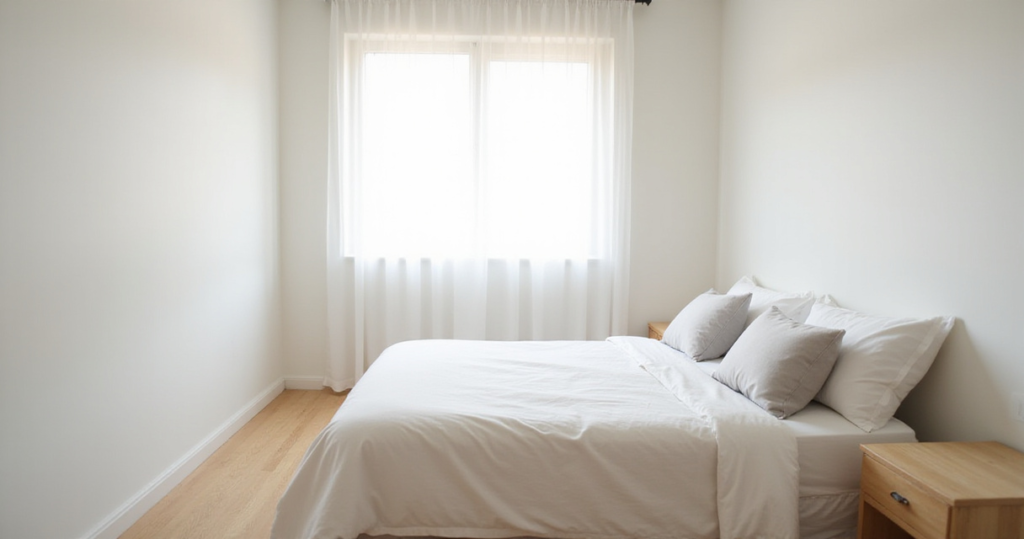Small bedrooms, while cozy, can often feel cramped and challenging to design. Do you dream of a serene and stylish bedroom retreat but are limited by square footage? Fear not! Designing a small bedroom to be both functional and beautiful is absolutely achievable.
It’s all about smart strategies and clever design choices that maximize every inch of available space. From innovative storage solutions to illusions of spaciousness, these 20 genius ideas will transform your small bedroom into a haven of comfort and style. Let’s unlock the full potential of your petite paradise!
1. Go Up, Not Out: Vertical Storage Solutions for Small Bedrooms
In small bedroom design, one principle reigns supreme: maximize vertical space. When floor space is at a premium, looking upwards isn’t just a design choice—it’s a necessity. Vertical storage takes advantage of the often-underutilized height of your room, drawing the eye upward and creating a feeling of spaciousness without sacrificing valuable walking area.
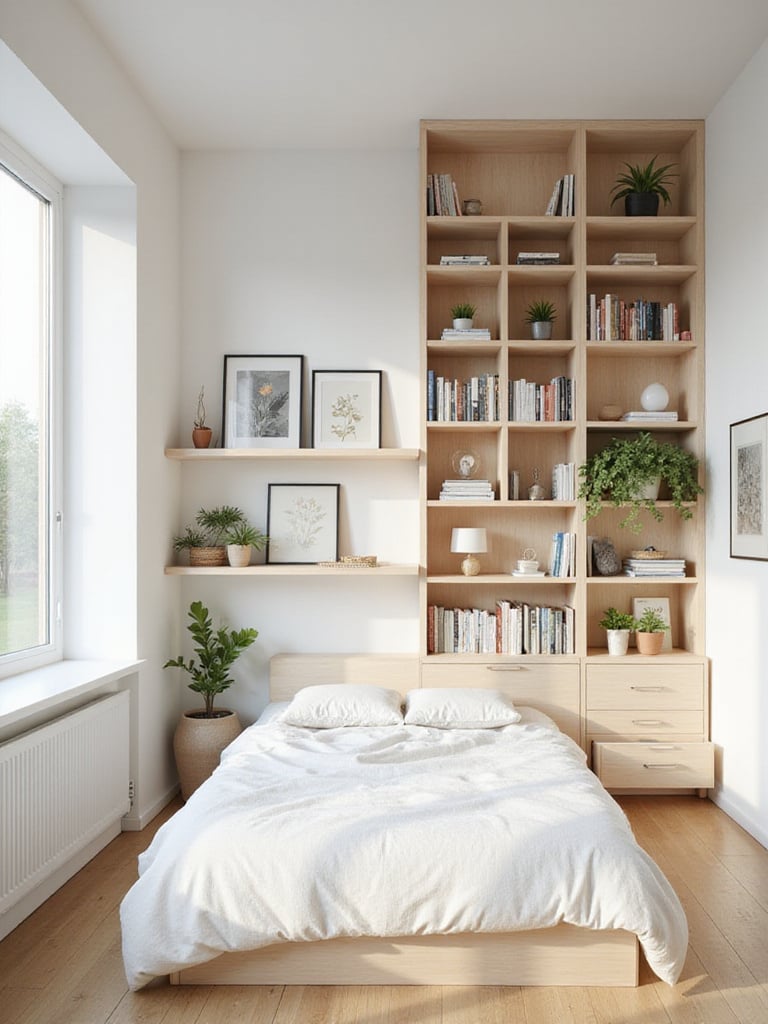
Your options for vertical storage are wonderfully diverse:
- Tall bookshelves (floor-to-ceiling or modular)
- Wall-mounted shelves
- Floating shelves
- Over-the-door organizers
- Headboards with built-in storage
- Clothing racks that extend upwards
- Shelving above closets
Here’s the catch: to prevent vertical storage from feeling overwhelming, choose light colors for shelves and storage units. This reflects light and creates a sense of airiness, perfect for small bedroom design.
2. Reflect and Expand: Strategically Place Mirrors to Double the Perceived Space
Mirrors are more than just decorative elements—they’re powerful tools for transforming small spaces. In a small bedroom, strategically placed mirrors work wonders by reflecting light and creating an optical illusion that extends the boundaries of your room. They essentially “borrow” space from outside the reflected area, making the room feel larger and brighter.
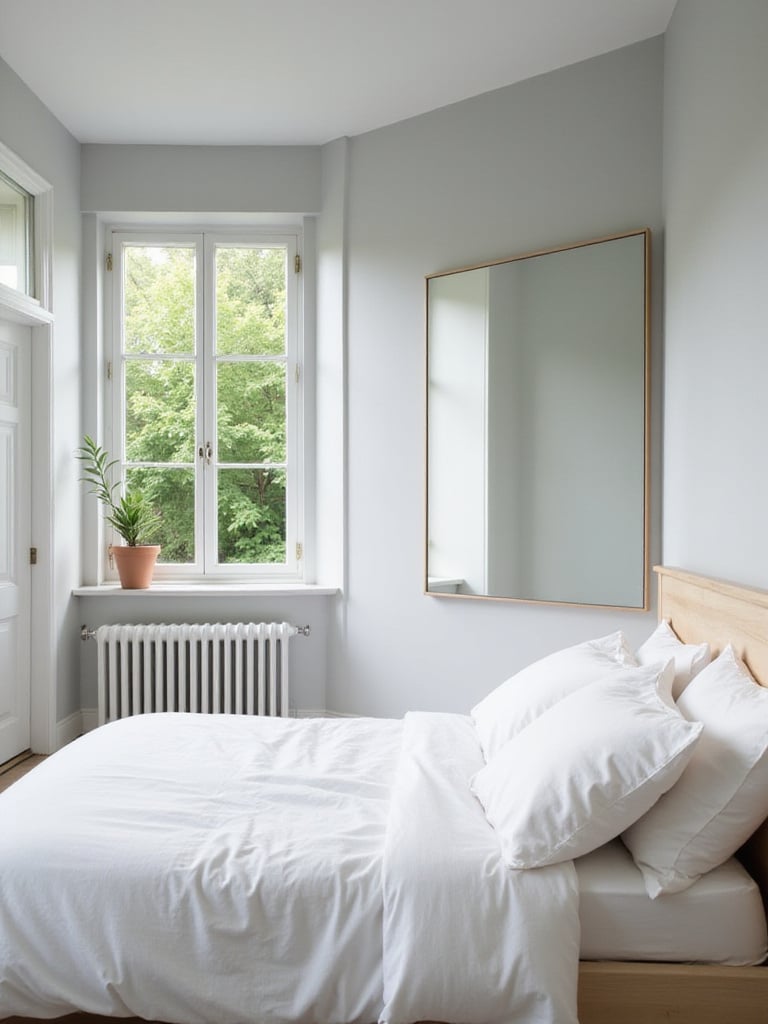
The magic lies in strategic placement. Consider these prime spots:
- Opposite a window (reflects natural light)
- Behind a light source (amplifies illumination)
- On wardrobe doors (functional and visually expanding)
- As a headboard alternative (creates dramatic depth)
- Near the entrance (sets a spacious tone)
What unfolded next was surprising—I discovered that creating a gallery wall using mirrors of varying shapes and sizes (with a cohesive frame style) could transform even the tiniest bedroom into something that felt much more expansive.
3. Lighten Up: Choose Bright Color Palettes for an Airy and Open Feel
Color plays a crucial role in small bedroom design. The science is simple: bright colors reflect more light than dark colors, creating the illusion of more square footage by visually expanding walls and ceiling. Dark colors, meanwhile, absorb light and make rooms feel smaller and more enclosed.
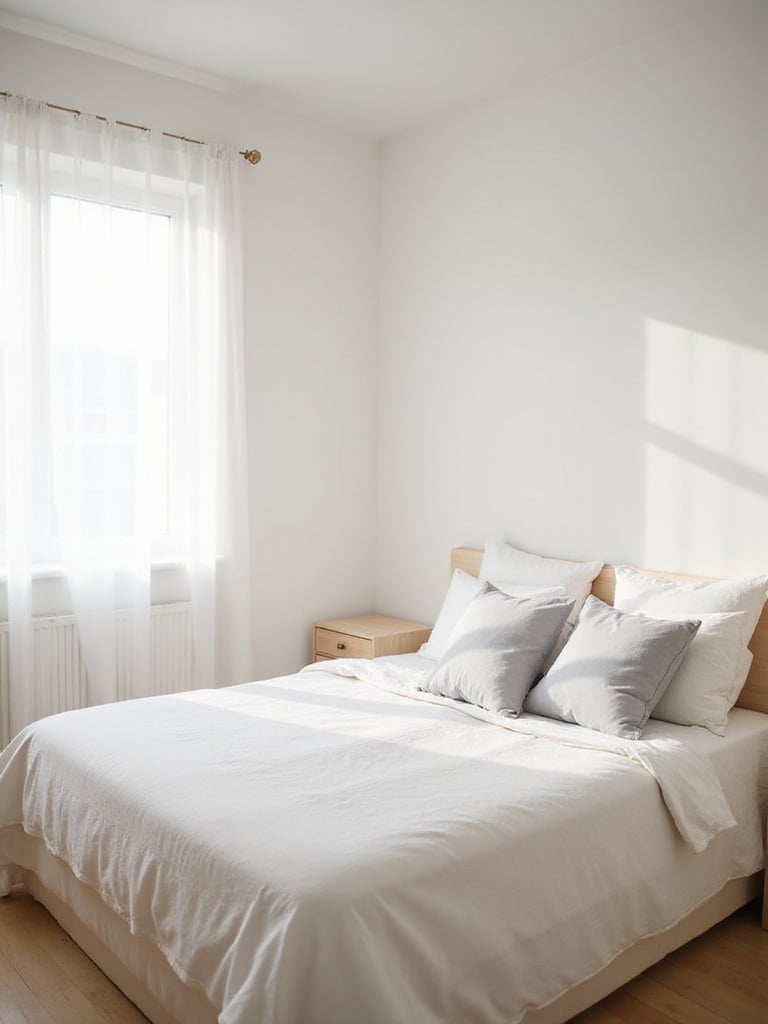
Consider these bright palettes to visually expand your space:
- White on white (layer different textures to add depth)
- Pastels (soft blues, greens, pinks, and yellows)
- Light neutrals with pops of color
- Monochromatic schemes (various shades of the same color)
The tricky part is making these colors work in different lighting conditions. Try painting your ceiling a shade lighter than the walls to visually lift it and make the room feel taller. Test paint colors in your room before committing, and observe how they look at different times of day.
4. Declutter for Calm: The First Step to a Serene Small Bedroom Oasis
Before you even think about new furniture or décor, the most transformative step in small bedroom design is decluttering. In a small bedroom, clutter isn’t just aesthetically displeasing—it’s a significant space hog that makes the room feel smaller and more overwhelming. A cluttered environment also contributes to stress and anxiety, hindering restful sleep.
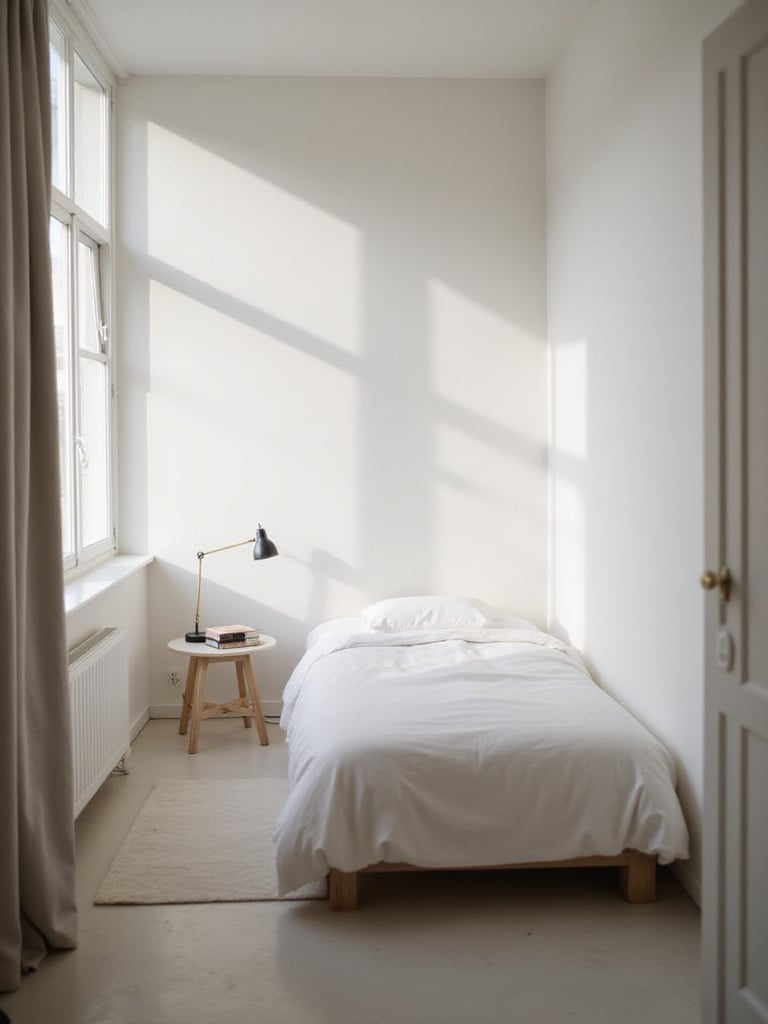
Start with the easiest wins:
- Focus on visible clutter first (surfaces like bedside tables, dressers, and floors)
- Tackle specific areas like closets, drawers, and under-bed storage
- Break down the task into smaller, manageable chunks
- Begin with items you know you no longer need or use
My breakthrough came when I implemented the ‘KonMari Method’—asking whether each item sparked joy. If not, I thanked it for its service and let it go. This simple mindset shift created immediate results and motivation to continue the decluttering journey.
5. Two-in-One Wonders: Invest in multi-functional furniture to Save Space and Add Utility
In a small bedroom, every piece of furniture should work hard and pull its weight. This is where multi-functional furniture shines, offering dual purposes that save precious space and add practicality to your room.

Popular options that work wonders in small bedroom design include:
- Storage beds with drawers or lift-up mechanisms
- Sofa beds/futons for guest rooms or studio apartments
- Folding or wall-mounted desks
- Ottomans with hidden storage
- Coffee tables with lift-top mechanisms
- Beds with built-in shelving or storage headboards
- Murphy beds/wall beds that fold away completely
The game-changer happened as I realized these pieces weren’t just space-savers—they were style enhancers too. Modern multi-functional furniture comes in sleek, contemporary designs that elevate the look of a small bedroom while maximizing every square inch.
6. Hidden Storage Hero: Maximize Under-Bed Space with Drawers or Storage Bins
The space under your bed is prime real estate in small bedroom design, often underutilized and overlooked. Unlocking this hidden storage potential can make a significant difference in keeping your room organized and spacious.
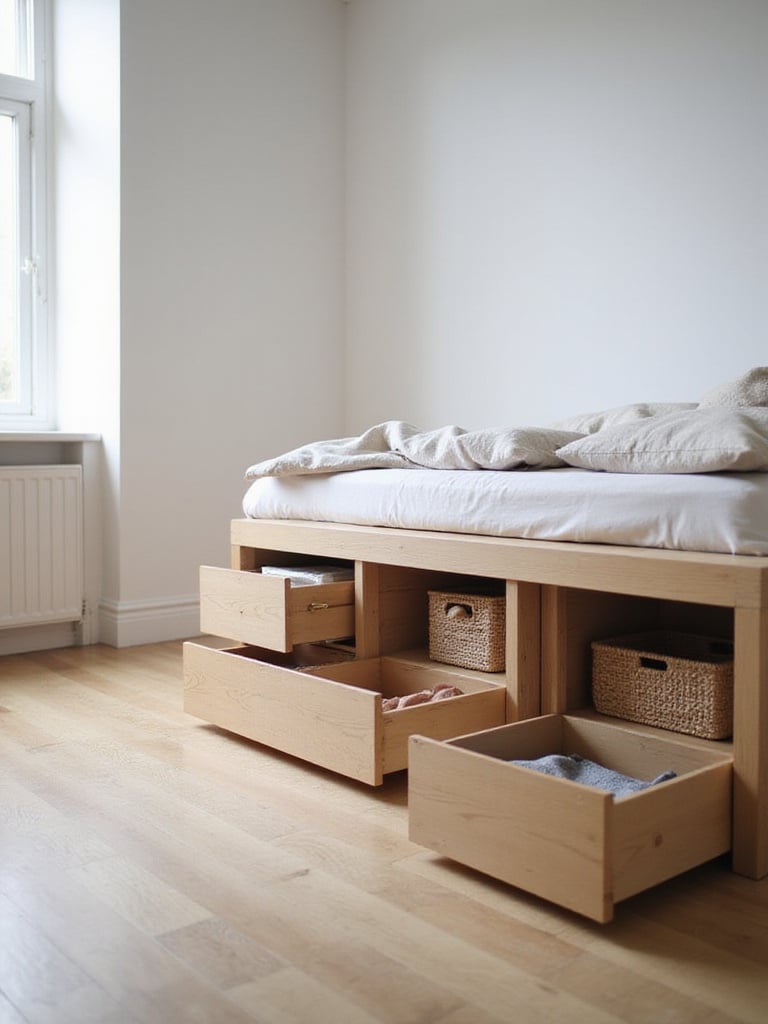
Ideal items for under-bed storage include:
- Seasonal clothing
- Extra bedding (sheets, blankets, pillows)
- Shoes
- Books
- Out-of-season decorations
- Items used infrequently
The crucial element is using clear storage bins to easily identify contents without rummaging through everything. For even better organization, consider utilizing rolling storage carts with multiple shelves that can slide under the bed for easy access to frequently used items.
7. Float Your Nightstand: Opt for Wall-Mounted Tables to Free Up Floor Space
Traditional nightstands, while functional, can sometimes feel bulky in a small bedroom. A clever alternative that enhances both style and space is the floating nightstand. By mounting directly to the wall, these space-savers eliminate visual clutter and free up valuable floor space, creating a sense of airiness and allowing for easier movement around the bed.
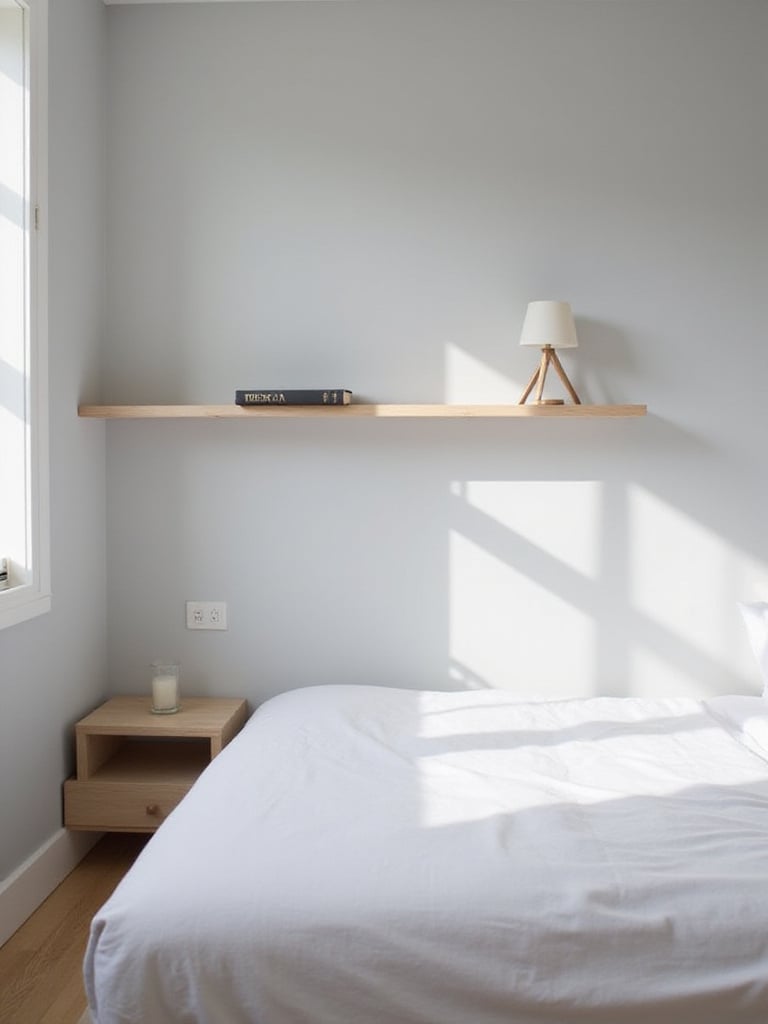
When choosing a floating nightstand, consider:
- Appropriate size for your bed and essentials
- Weight capacity for lamps, books, and other items
- Mounting requirements for your wall type
- Ideal height for accessibility from your bed
Let me paint you a picture: a minimalist floating shelf painted the same color as your wall creates a seamless, nearly invisible nightstand that holds essentials without visually cluttering your small bedroom design. Before purchasing, carefully measure the space beside your bed and mark mounting points with a level to ensure it’s straight.
8. Less is More: Embrace Minimalism to Create a Spacious and Uncluttered Environment
Minimalism is more than just a design trend—it’s a philosophy perfectly suited to small bedroom design. By intentionally reducing clutter and focusing on essential items, you create a space that feels larger, calmer, and more serene.
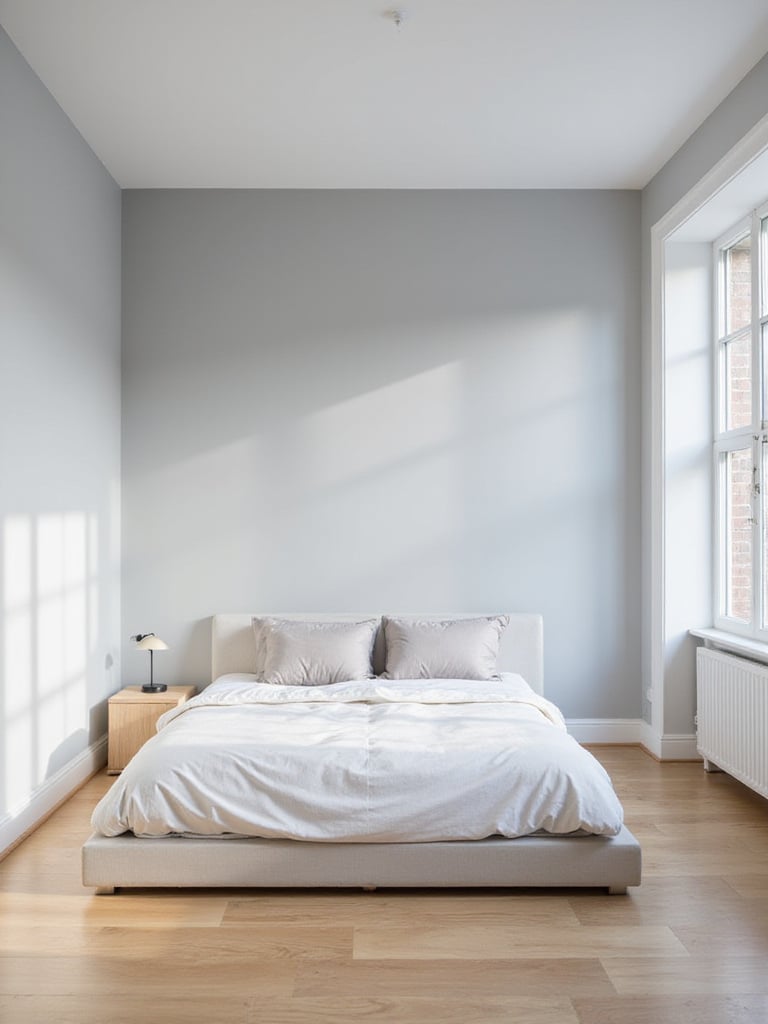
Common minimalism mistakes to avoid:
- Mistaking minimalism for austerity or lack of personality
- Focusing solely on decluttering without addressing storage solutions
- Making impulsive purchases that undo your minimalist approach
- Removing too much, creating a cold or sterile environment
Picture it this way: minimalism isn’t about having nothing—it’s about making room for what matters. In a small bedroom, this means incorporating multi-functional furniture, like a bed frame with built-in storage drawers or a nightstand that doubles as a desk. Every item should serve a purpose or bring joy.
9. Illuminate Intelligently: Use Smart Lighting Solutions to Enhance Ambiance Without Cluttering Surfaces
Lighting is crucial in any bedroom, but in a small space, it’s even more impactful. Smart lighting solutions offer a modern and space-saving way to illuminate your small bedroom while enhancing its ambiance without taking up valuable surface space.
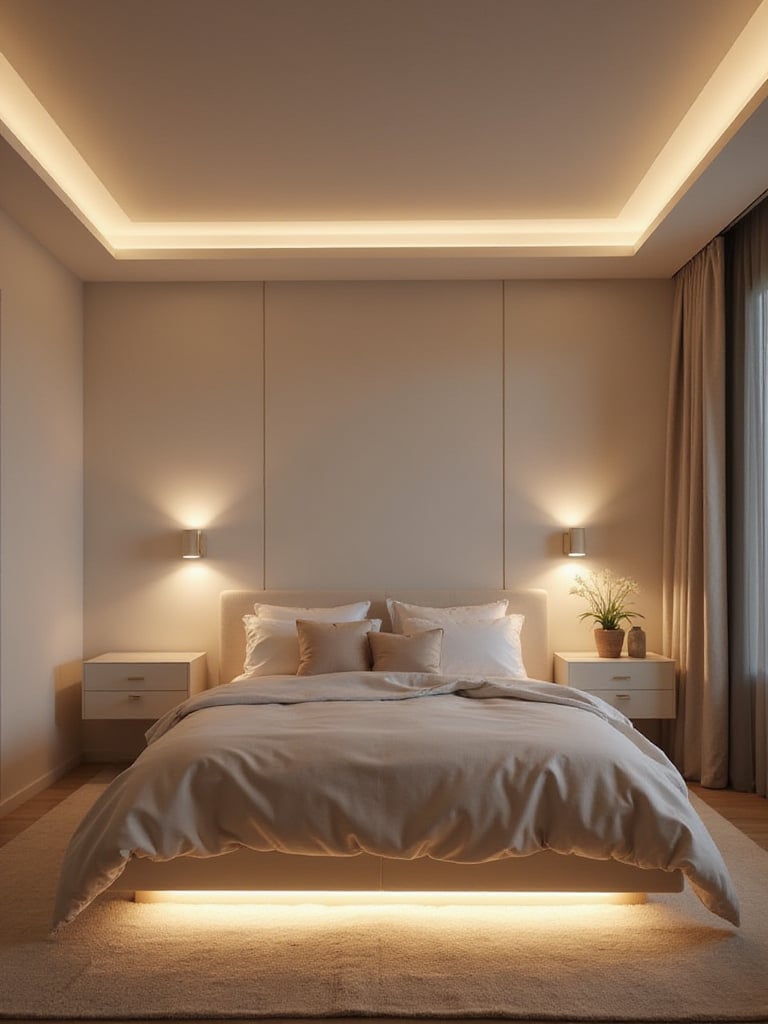
Several smart lighting options are ideal for small bedrooms:
- Smart bulbs to convert existing fixtures
- LED strip lights with adhesive backing
- Smart sconces for wall-mounted illumination
- Smart recessed lighting for clean, modern looks
- Smart floor lamps with small footprints
Do you see how huge that is? Installing smart LED strip lights under the bed creates a floating effect and adds a soft, warm glow to the floor—all without taking up any surface space. Smart bulbs can save up to 85% energy compared to traditional incandescent bulbs, making them both space and energy efficient.
10. Conquer the Corners: Utilize Corner Shelves or Custom Built-Ins for Smart Storage
Corners, often perceived as awkward or unusable, are actually hidden gems in small bedroom design. They represent valuable space that, when utilized effectively, can significantly boost storage and functionality in your room.
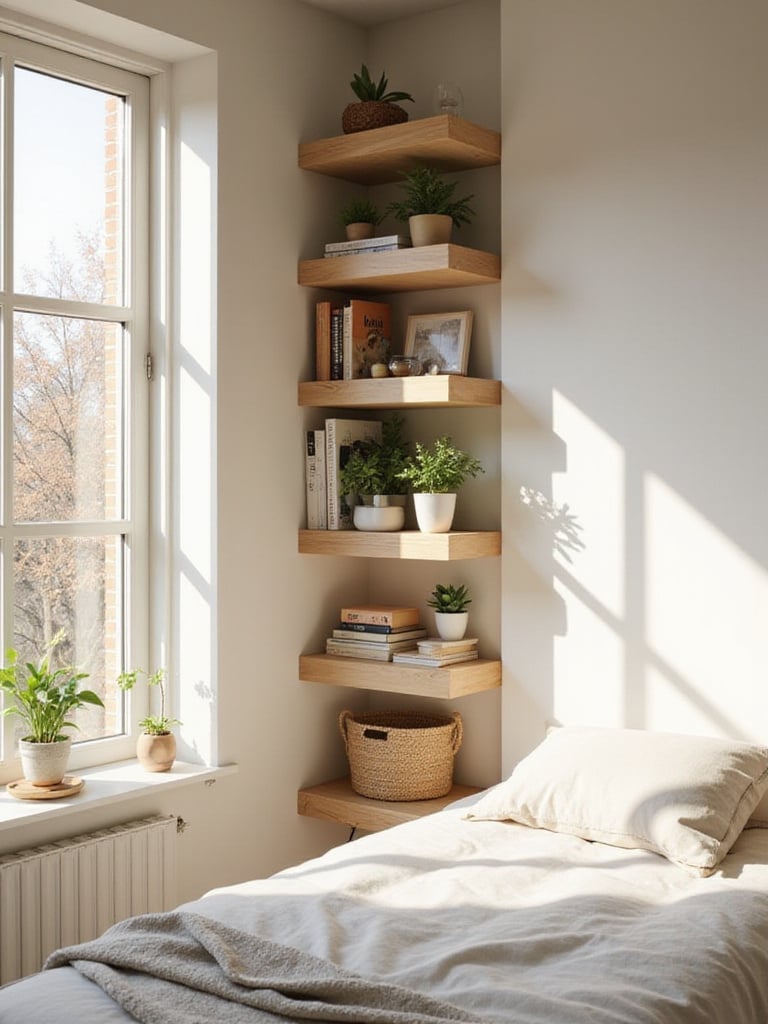
Corner shelves and custom built-ins offer several benefits:
- Maximizing vertical space
- Utilizing otherwise dead space
- Providing accessible storage
- Enhancing the room’s aesthetic appeal
- Creating a seamless, organized look
The missing piece is often a corner desk with built-in shelving above to create a compact and functional workspace. This transforms an overlooked corner into one of the most useful areas in your small bedroom design, proving that no space is too awkward or small to be functional.
11. Headboard Highlight: Choose a Statement Headboard That Adds Style Without Overwhelming the Room
The headboard is often the focal point of a bedroom, and in a small space, it’s an opportunity to make a stylish statement without sacrificing valuable square footage. A tall headboard draws the eye upward, creating the illusion of higher ceilings, while integrated shelving or storage compartments provide valuable space for books, lamps, or other essentials.
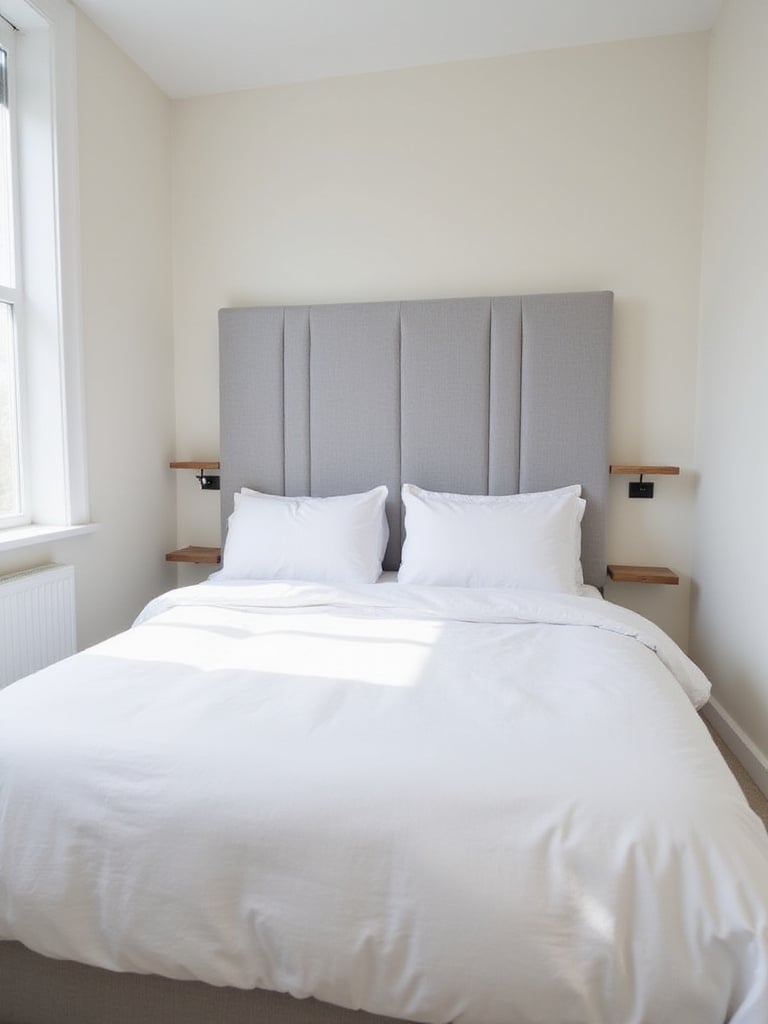
A statement headboard in a small room isn’t about size, but impact:
- Unique textures (like rattan or woven fabrics)
- A striking color that complements the room’s palette
- A distinctive shape (like curved or arched designs)
- Built-in functionality (like integrated sconces)
The implications are staggering when you consider that a headboard with built-in sconces eliminates the need for table lamps altogether, freeing up precious nightstand space in your small bedroom design while creating a hotel-like luxury feel.
12. Let the Light In: Opt for Sheer Curtains to Maximize Natural Light and Create an Open Feel
Natural light is a game-changer in small bedroom design. It instantly makes the space feel brighter, airier, and larger. Choosing the right window treatments is crucial to maximize this natural light and create an open feel.
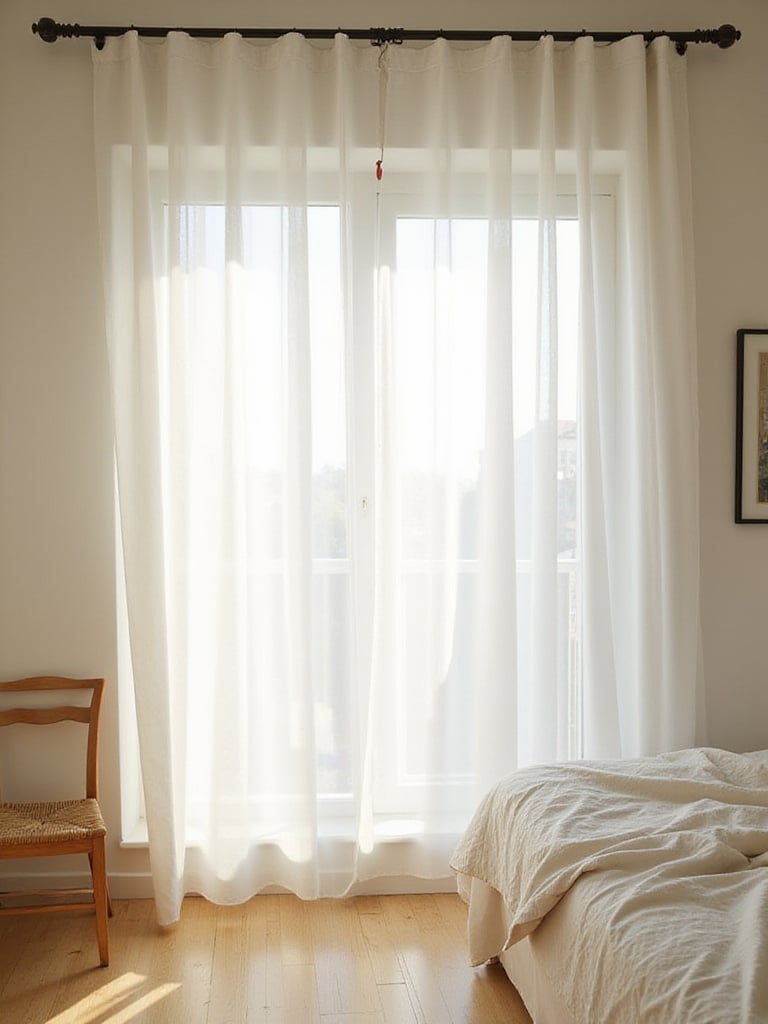
Lightweight fabrics that work beautifully for sheer curtains include:
- Voile (from the French word for ‘veil’)
- Chiffon
- Lace
- Linen blends
- Cotton gauze
It’s similar to creating a veil between your bedroom and the outside world—one that filters light beautifully while still providing privacy. For maximum flexibility, consider layering sheer curtains with blackout curtains that can be pulled across when you need darkness or complete privacy.
13. Define Your Zones: Use Rugs to Anchor the Bed and Visually Enlarge the Space
In a small bedroom design, where space is limited and furniture often blends together, defining zones is crucial for creating a sense of organization and spaciousness. Rugs are surprisingly effective tools for achieving this visual separation.
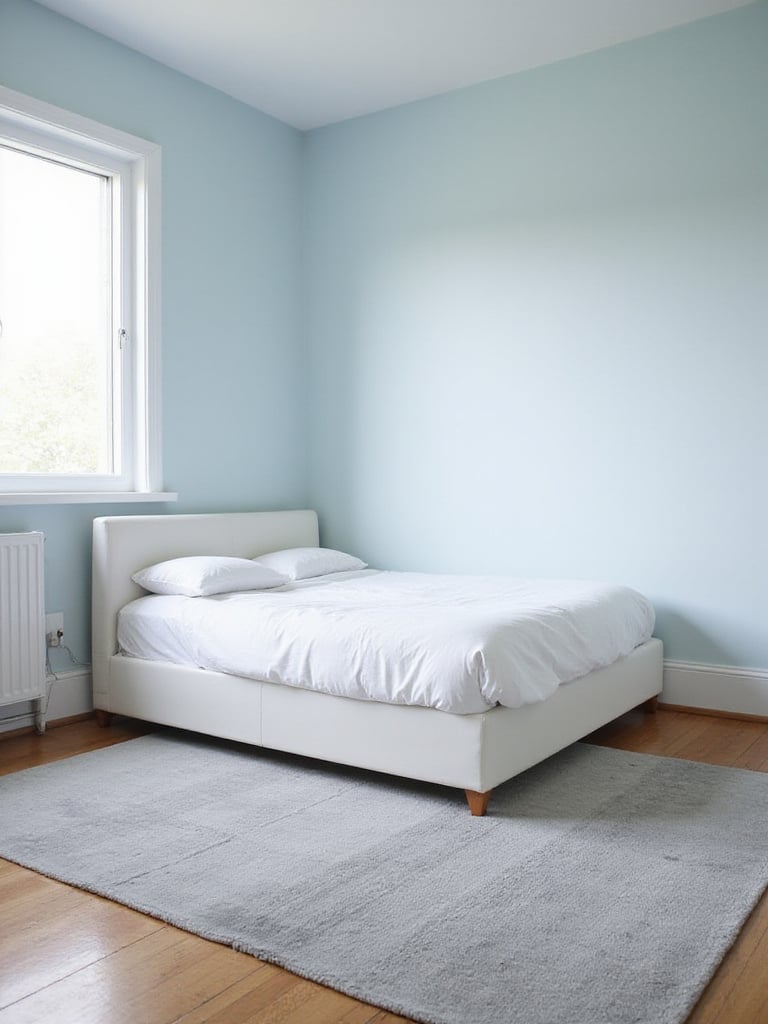
A well-chosen rug can visually enlarge your space when:
- It extends significantly beyond the bed on all sides
- It’s proportional to the room size
- It has a simple pattern or solid color that doesn’t overwhelm
- It contrasts slightly with the floor color to define the space
You could compare it to creating an island for your bed—a defined space within the larger room that gives purpose and organization to the layout. Using a brightly colored or patterned rug can add a focal point to a neutral-toned small bedroom, bringing life and personality to the space.
14. Breathe Life In: Add Plants to Your Small Bedroom for Freshness and a Touch of Nature
Plants are more than just decorative accents in small bedroom design—they’re living elements that transform the atmosphere. Adding greenery brings freshness, improves air quality, and enhances overall well-being in your space.
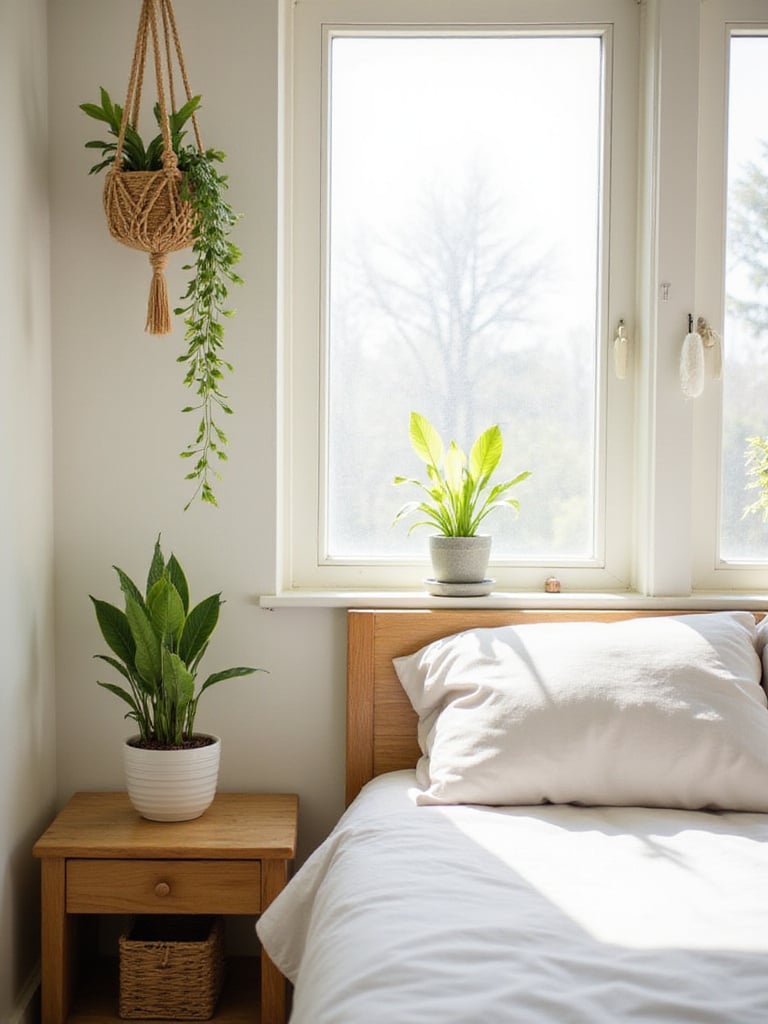
Low-maintenance plants perfect for small bedrooms include:
- Snake plants (purify air even at night)
- ZZ plants (drought-tolerant)
- Spider plants (easy propagation)
- Peace lilies (elegant air purifiers)
- Pothos (versatile trailing plants)
- Air plants (no soil needed)
The breakthrough came when I created a hanging macrame planter to showcase a trailing pothos plant. This added a boho touch to my small bedroom design while keeping precious surface space free. Remember to choose pots with drainage holes and well-draining soil to prevent overwatering and root rot.
15. Fold Away the Clutter: Incorporate Foldable Furniture Like Murphy Beds or Folding Desks for Flexibility
Flexibility is key in small bedroom design, and foldable furniture is designed precisely for this purpose. These ingenious pieces transform a room from one function to another in moments, maximizing space and adaptability.
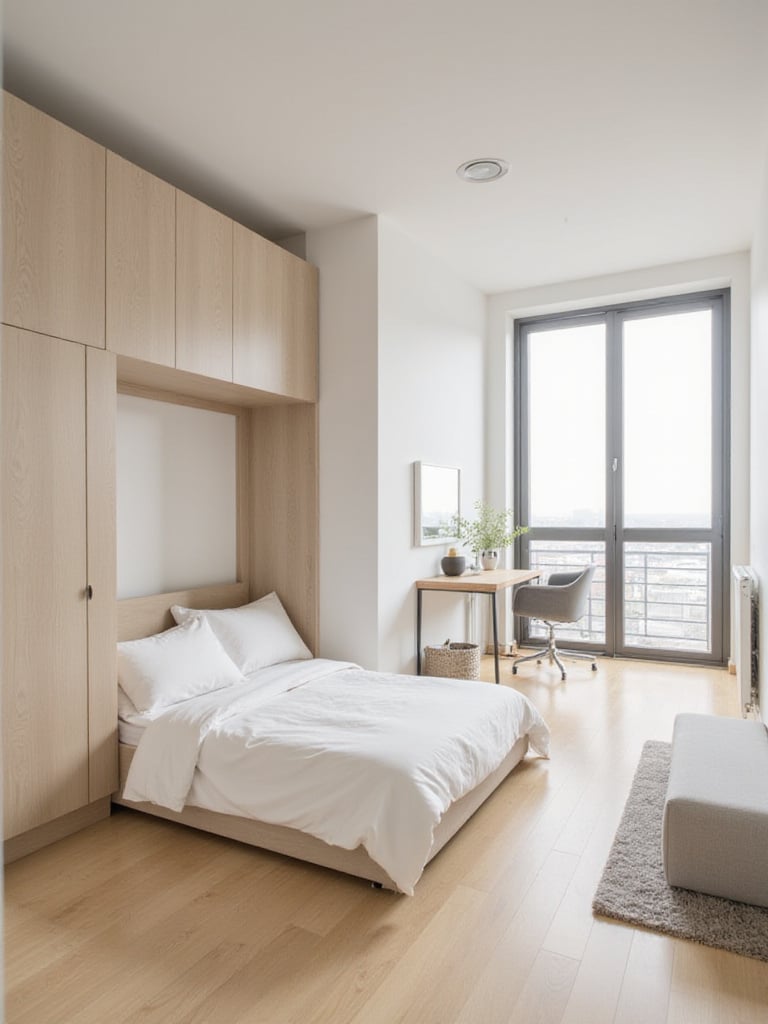
Popular foldable furniture options for small bedrooms include:
- Murphy beds (wall beds)
- Folding desks
- Drop-leaf tables
- Folding chairs
- Nesting tables
- Foldable sofas
- Collapsible room dividers
Things took an interesting turn when I created a hidden home office with a folding desk and a wall-mounted storage unit that opens into a workspace. During the day, it’s a productive office; at night, it disappears completely, returning the room to a peaceful sleeping space.
16. Slide into Space Saving: Consider Sliding Doors for Closets to Maximize Walkway Space
Traditional swinging closet doors require clearance space to open and close—a significant impediment in small bedroom design. Sliding doors offer a sleek and space-saving alternative, saving anywhere from 2 to 4 feet of floor space that would otherwise be needed for door swing.
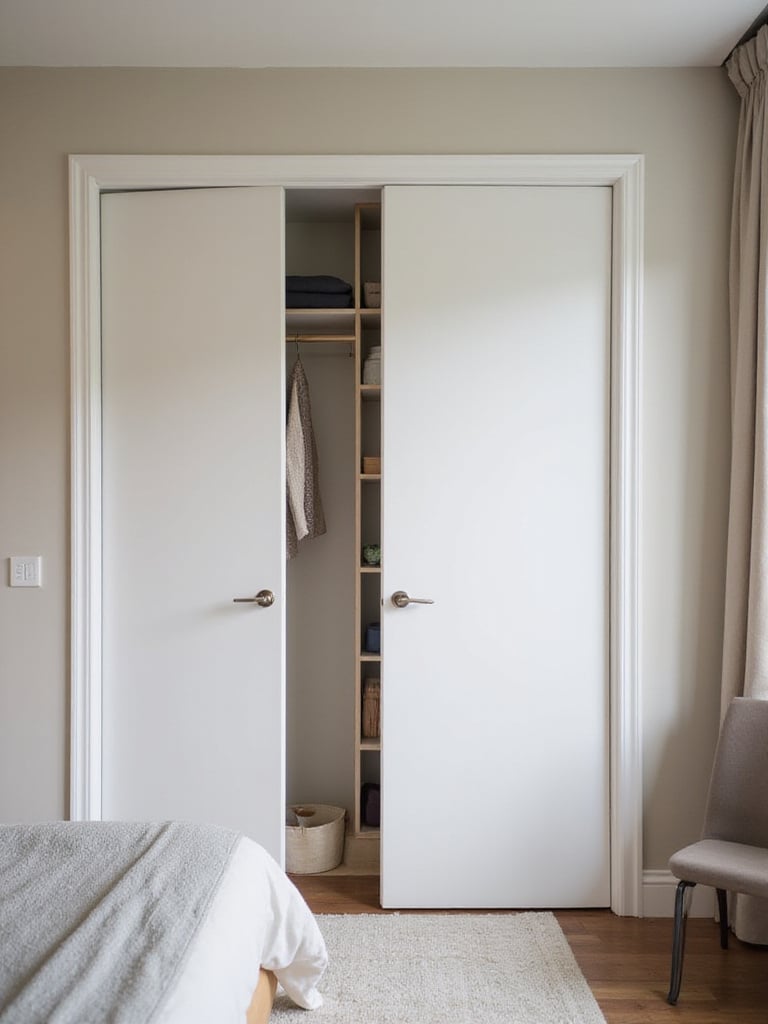
Different types of sliding closet doors include:
- Bypass doors (two or more doors that slide past each other)
- Bi-fold doors (which fold and then slide)
- Pocket doors (which slide into the wall)
My experience went like this: installing full-length mirrored sliding closet doors not only solved the door swing problem but also visually doubled the size of my small bedroom. The mirrors reflected light from the window, creating a brighter, more expansive feel throughout the space.
17. Seamless Storage: Explore Built-In Storage Solutions for a Streamlined and Clutter-Free Bedroom
Built-in storage is the epitome of space optimization in small bedroom design. By integrating storage directly into the room’s architecture, you create a seamless and clutter-free environment that maximizes every square inch.
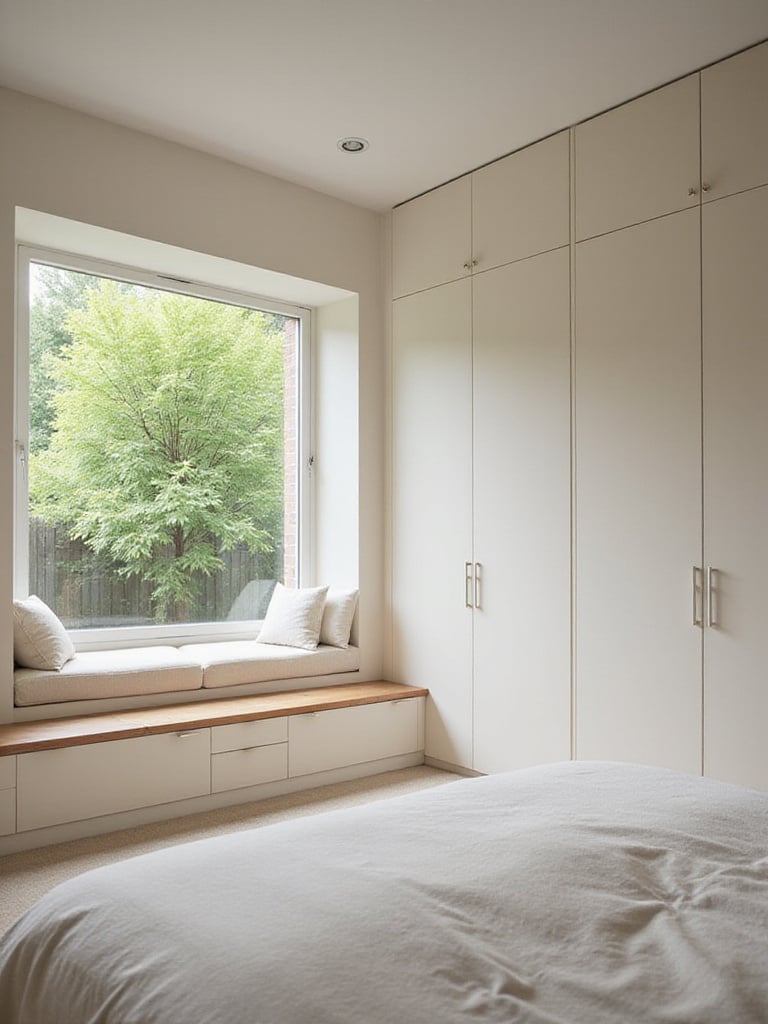
Effective built-in storage options include:
- Floor-to-ceiling wardrobes
- Platform beds with storage
- Window seat storage
- Alcove shelving
- Headboard storage
- Under-eaves storage in attic bedrooms
The stumbling block is often the perceived cost, but modular storage systems can create a customized built-in look without the expense of fully custom carpentry. These systems feature adjustable shelves, drawers, and other components that can be arranged to perfectly fit your space and storage needs.
18. Vertical Greenery: Install a Vertical Garden to Bring Nature In Without Taking Up Precious Floor Space
In small bedroom design, floor space is too valuable to sacrifice for traditional potted plants. Vertical gardens offer a brilliant solution, bringing nature’s beauty and benefits without taking up precious square footage.
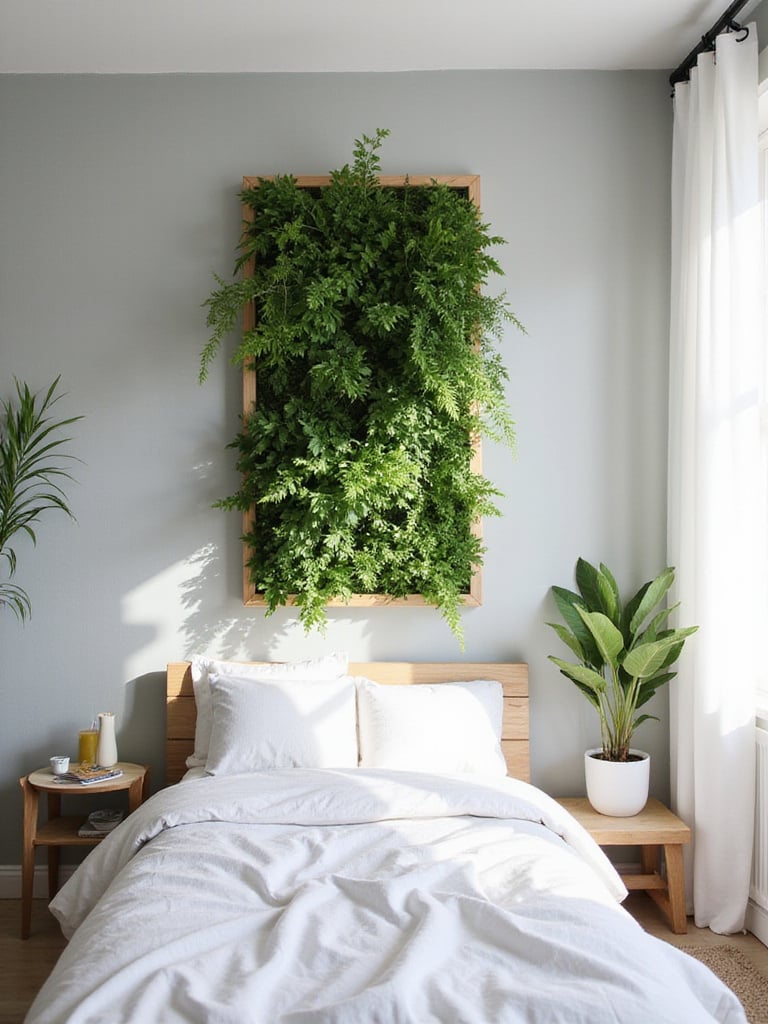
Best plants for bedroom vertical gardens include:
- Pothos (adaptable and easy)
- ZZ Plants (drought-tolerant)
- Snake Plants (purify air at night)
- Peace Lilies (elegant air purifiers)
- Ferns (for higher humidity areas)
- Air Plants (no soil needed)
The potential here is enormous—vertical gardens not only add visual interest but also improve air quality, reduce stress, and even help regulate humidity. Using a modular vertical garden system allows for easy expansion or rearrangement as your plant collection and design preferences evolve.
19. Slim Down Your Style: Choose Sleek, Low-Profile Furniture Designs to Maximize Movement and Space
Bulky, oversized furniture can quickly overwhelm small bedroom design, making spaces feel cramped and difficult to navigate. Choosing sleek, low-profile furniture is a smart strategy to maximize movement and create a sense of spaciousness.
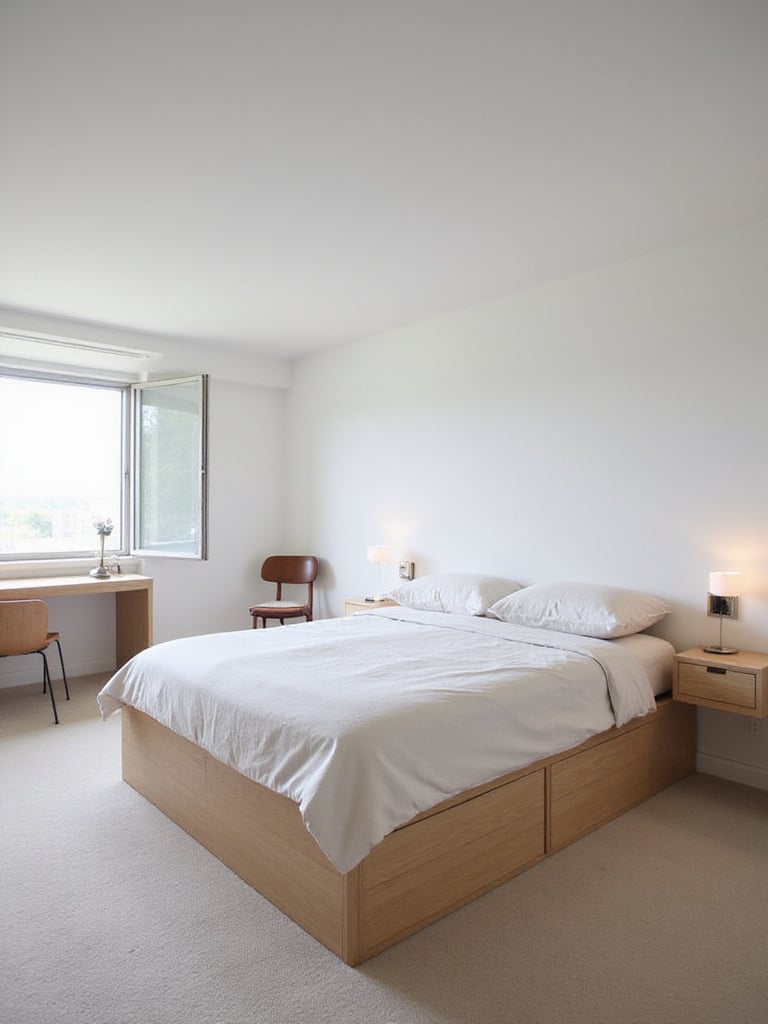
Sleek furniture designs that work well include:
- Platform beds with integrated storage
- Floating shelves instead of bulky bookcases
- Wall-mounted nightstands
- Benches instead of armchairs
- Streamlined desks with minimal legs
- Dressers with flat-front drawers and hidden hardware
Let that sink in for a moment—by simply choosing a platform bed with built-in storage drawers, you can eliminate the need for a separate dresser entirely. This single change frees up significant floor space and creates a cleaner, more open small bedroom design.
20. Create a Focus: Design a Focal Point Like an Accent Wall to Draw the Eye Away from the Room’s Size
In small bedroom design, drawing the eye to a specific point is a clever trick to distract from limited dimensions. Creating a focal point adds depth, interest, and style while directing attention away from the room’s size.
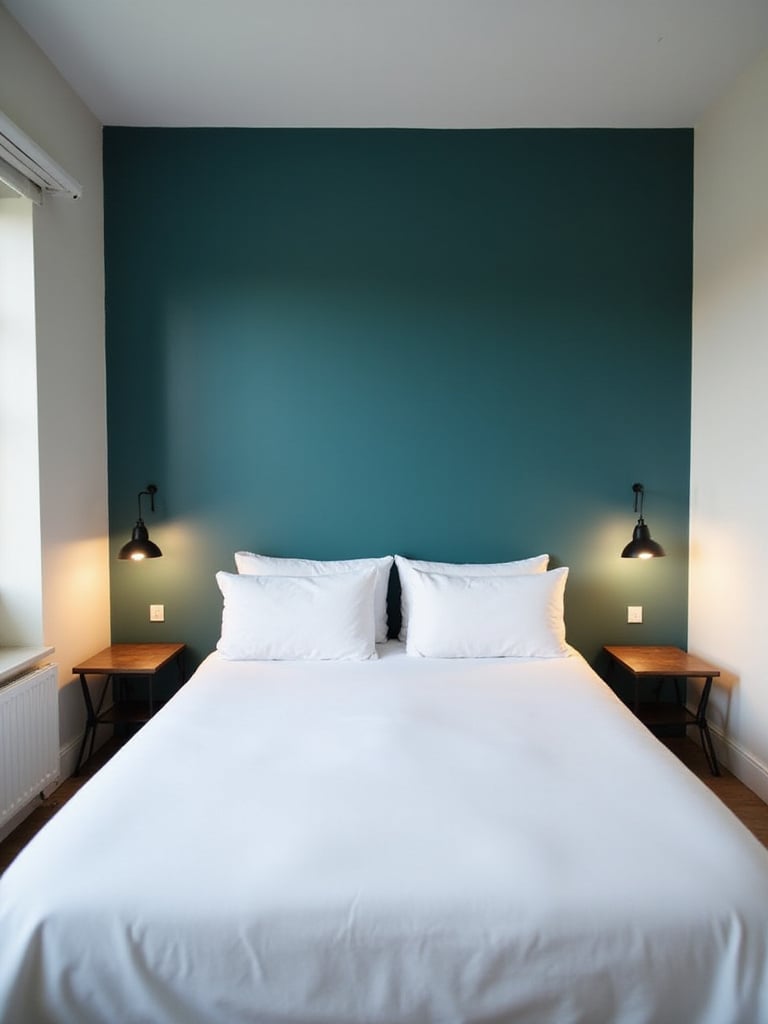
Creative focal point alternatives include:
- A statement headboard
- A large piece of art or gallery wall
- Bold patterned wallpaper on one wall
- A striking mirror
- A floor-to-ceiling bookshelf
- A textured wall (brick or wood paneling)
- A statement lighting fixture
The ripple effects are enormous—a well-designed focal point not only distracts from the room’s size but also adds personality and character to your space. Using textured wallpaper with a subtle pattern can add depth without overwhelming your small bedroom design.
Final Thoughts
Designing a small bedroom is a rewarding challenge that combines creativity with practicality. By implementing these 20 genius design ideas, you can transform your petite space into a stylish, functional, and serene retreat that feels much larger than its actual dimensions.
From maximizing vertical storage and reflecting light with mirrors to embracing minimalism and incorporating multi-functional furniture, every strategy contributes to creating the illusion of spaciousness. Remember, smart small bedroom design isn’t about limitations—it’s about turning constraints into opportunities for innovation. Your small bedroom might be limited in square footage, but with these ideas, its potential is anything but small!
